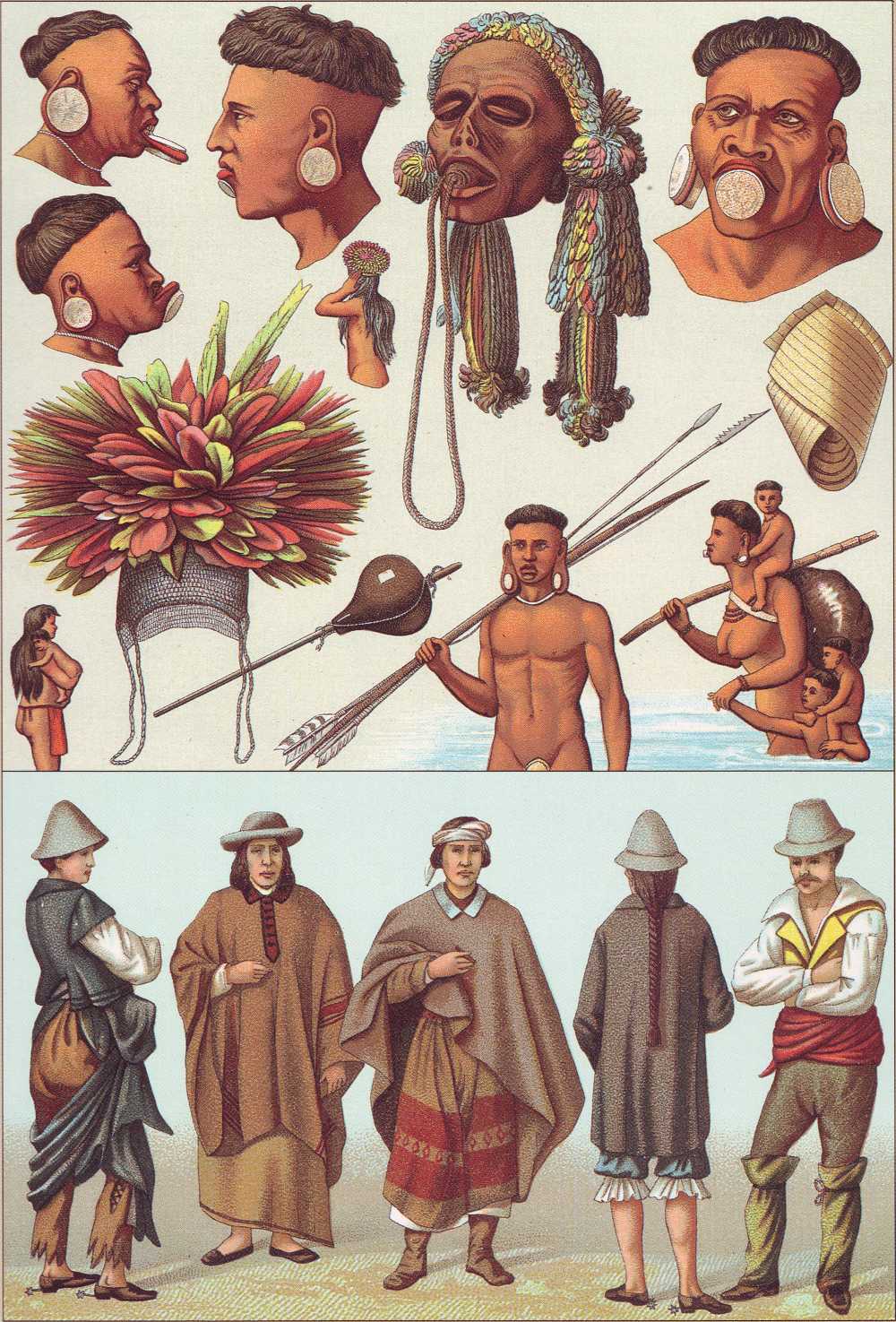
Create an Amazon Wedding Registry
THE HISTORICAL ENCYCLOPEDIA OF COSTUME
ALBERT RACINET
THE CLASSIC WORK OF THE 19TH CENTURYp72-73

ANTHROPOLOGISTS DIVIDE THE NATIVES of the great plain that stretches from the eastern slopes of the Peruvian Andes to the Atlantic Ocean into three families: the Guaranis, the Caraibes and the Botocudos. The latter, like the American Indians of the North, are still primitive hunters. They go about naked and lead a nomadic life, very often not even building shelters. Typically, their legs are thin. This, however, is seen as a mark of beauty, since it is achieved by tying their children's legs together to stunt their growth.
1 The Botocudos wear bizarre ornaments in their ears and bottom lip, though it would be unusual to find ornaments quite as large as some of those illustrated; both sexes have their ears and bottom lip pierced at the age of seven or eight. The botoque, or lip ornament, is slightly smaller for men than for women.
Botocudos go naked except for a girdle of leaves; an example can be seen in the illustration of the man with spears and large earrings, and details are shown above and right.
The other natives in 1 are Camacans: a branch of the Tapuyas who are direct ancestors of the Botocudos. The Camacan chief's crown made of feathers is one of the most beautiful articles of costume to be seen on the banks of the Amazon. The red and green parrot feathers are sewn into a type of woollen hood. Camacan women are skilled at spinning cotton, and make their only garment from it: a short apron, as worn by the woman in the bottom left-hand corner.

2 The basic population of Chile is composed of native Indians and Spanish Creoles. The Chilean men are in general excellent horsemen, robust and adroit, used to taming wild horses. Their bridles are made of simple strips of leather and their saddles are merely a piece of skin or material. Riding without stirrups, they spur their mounts on over the steepest ground.
The entire Chilean population wear the short cloak or poncho, the national costume. This is worn by both men and women, and by those who adhere to local custom as well as by those who follow European fashion.
The costume in 2.2 comes from Santiago, the capital of Chile, while the costumes in 2.1, 4 & 5 are more rustic and tend to be worn by the native Indians.
The poncho is a dalmatic without sleeves, reminiscent of the Roman tunic. It is a quadrangular piece of material, loft long by 6ft wide, with an opening for the head. The poncho covers the head and the top part of the body, but does not descend lower than the knees and often stops higher than that.
The most highly valued Ponchos are those from Arauca. These are made from the finest wool and chamois from the Andes. A poncho of this type takes nearly two years to make and is very expensive. The Chileans favourite colour for ponchos is turquoise-blue, but they may be also dyed yellow, green or red; they are often decorated with bands, sometimes patterned with delicate designs and figures.
The woman's poncho is a smaller version of the man's; women turn the basic poncho into an elegant garment, sewing and decorating it with exquisite care.